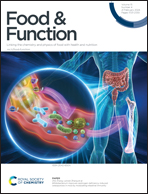Melon peel flour: utilization as a functional ingredient in bakery products
Abstract
Food by-products are a major concern with a direct impact on the economy, society, and environment. The valorisation of these by-products could be an advantageous approach to face the increase in food waste since it can compromise environmental health and food sustainability. On the other hand, this valorisation would allow the development of new food products with health benefits for the population. Cucumis melo L. is a highly consumed fruit all over the world since it has excellent sensory and nutritional qualities, being also a good source of bioactive compounds. However, its peel and seeds are usually discarded. The aim of this study was to evaluate the potential of melon peel flour as a functional ingredient for innovative food products. For that, two different formulations containing melon peel flour were developed (a biscuit and a muffin) by replacing a conventional flour (wheat flour) in different percentages (50% and 100%, respectively). The nutritional composition, total phenolic content, and antioxidant potential of the developed products were studied, showing a high content of fibre, high levels of phenolic compounds and good sensory acceptability. These results show that it is possible to enrich different foods with melon peel flour in order to improve their nutritional properties, contributing to improving public health, simultaneously valorising a usually rejected by-product, reducing food waste and the environmental impact.

- This article is part of the themed collection: XXII European Food Chemistry Congress Collection


 Please wait while we load your content...
Please wait while we load your content...